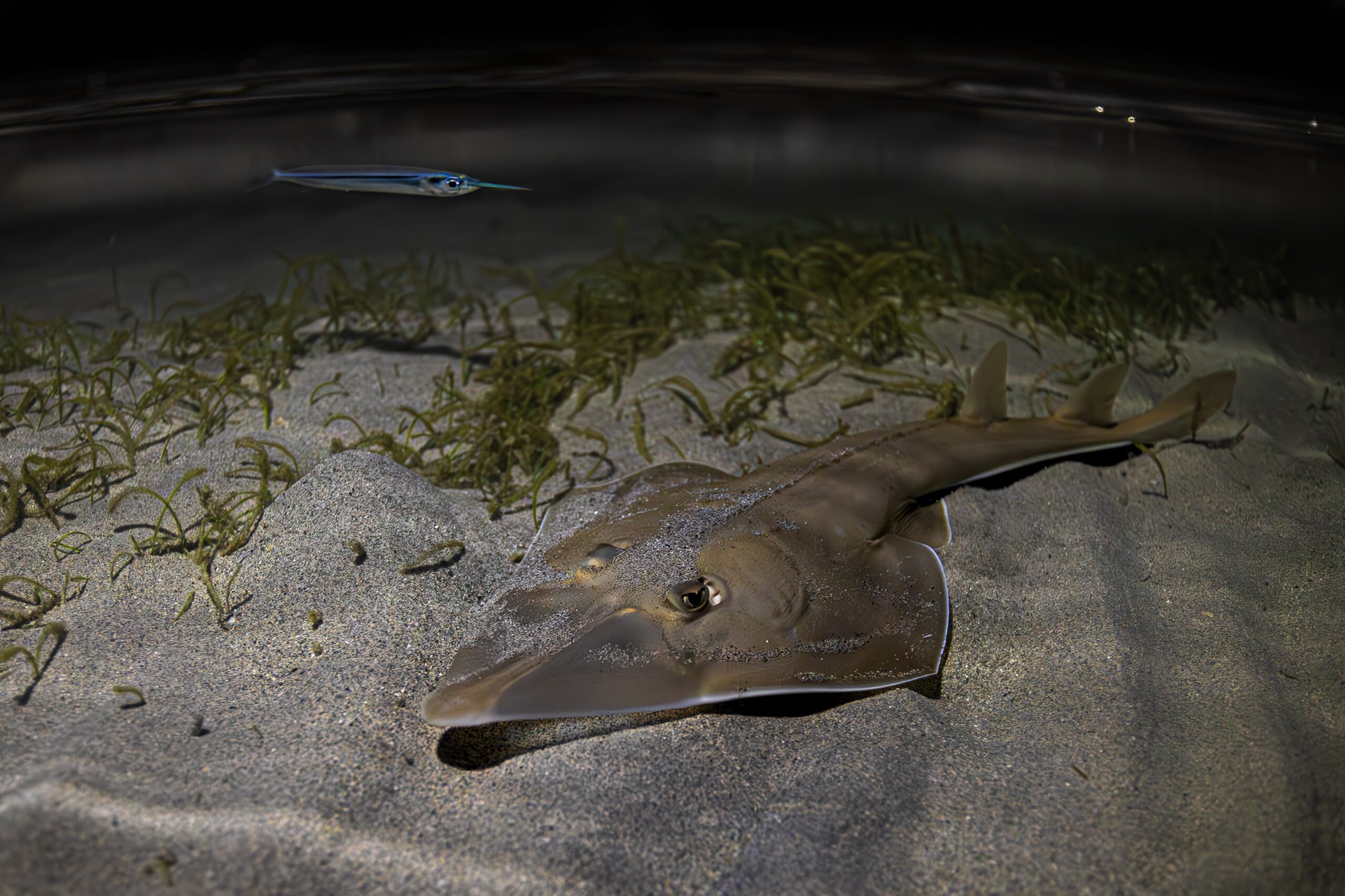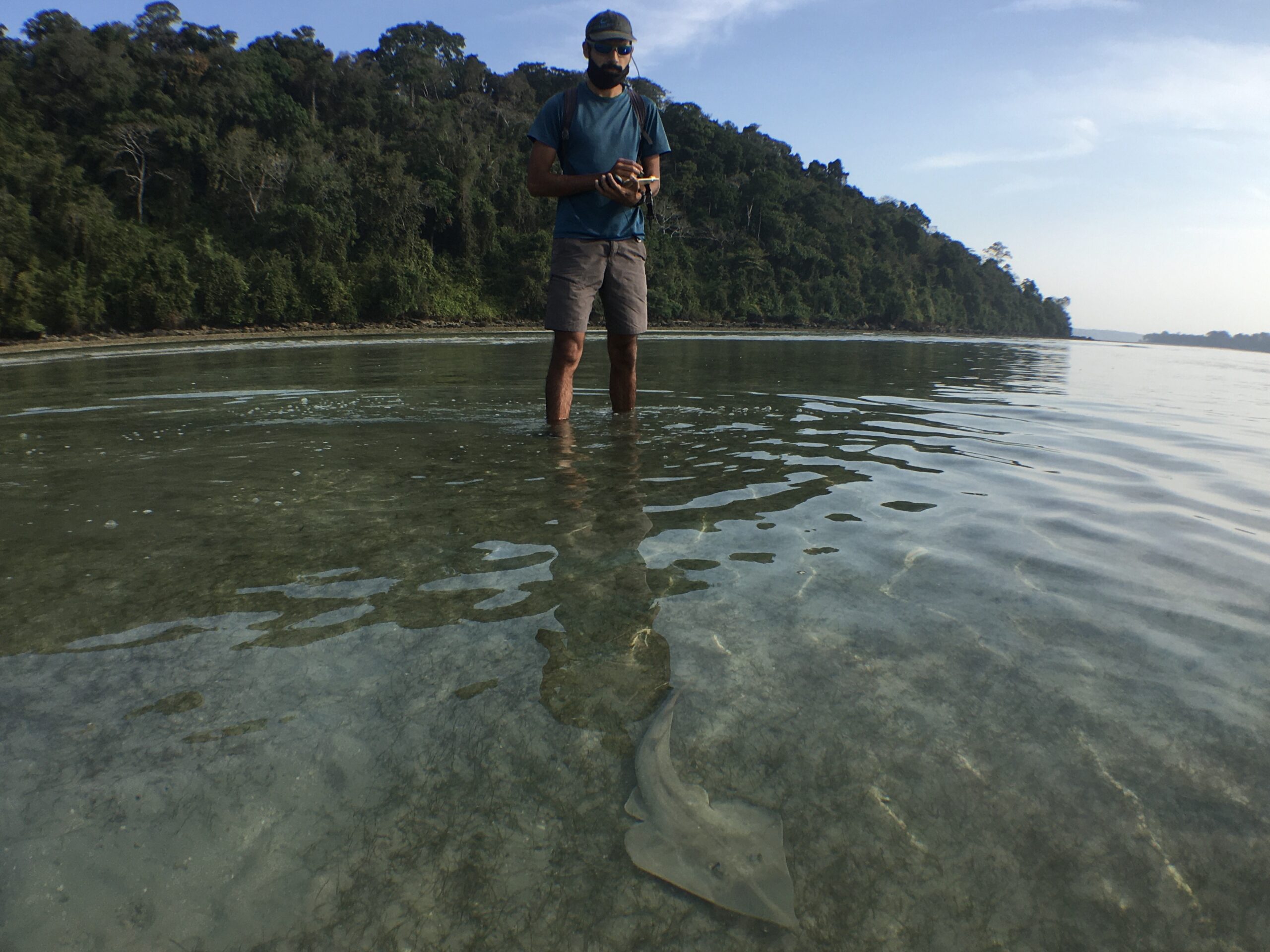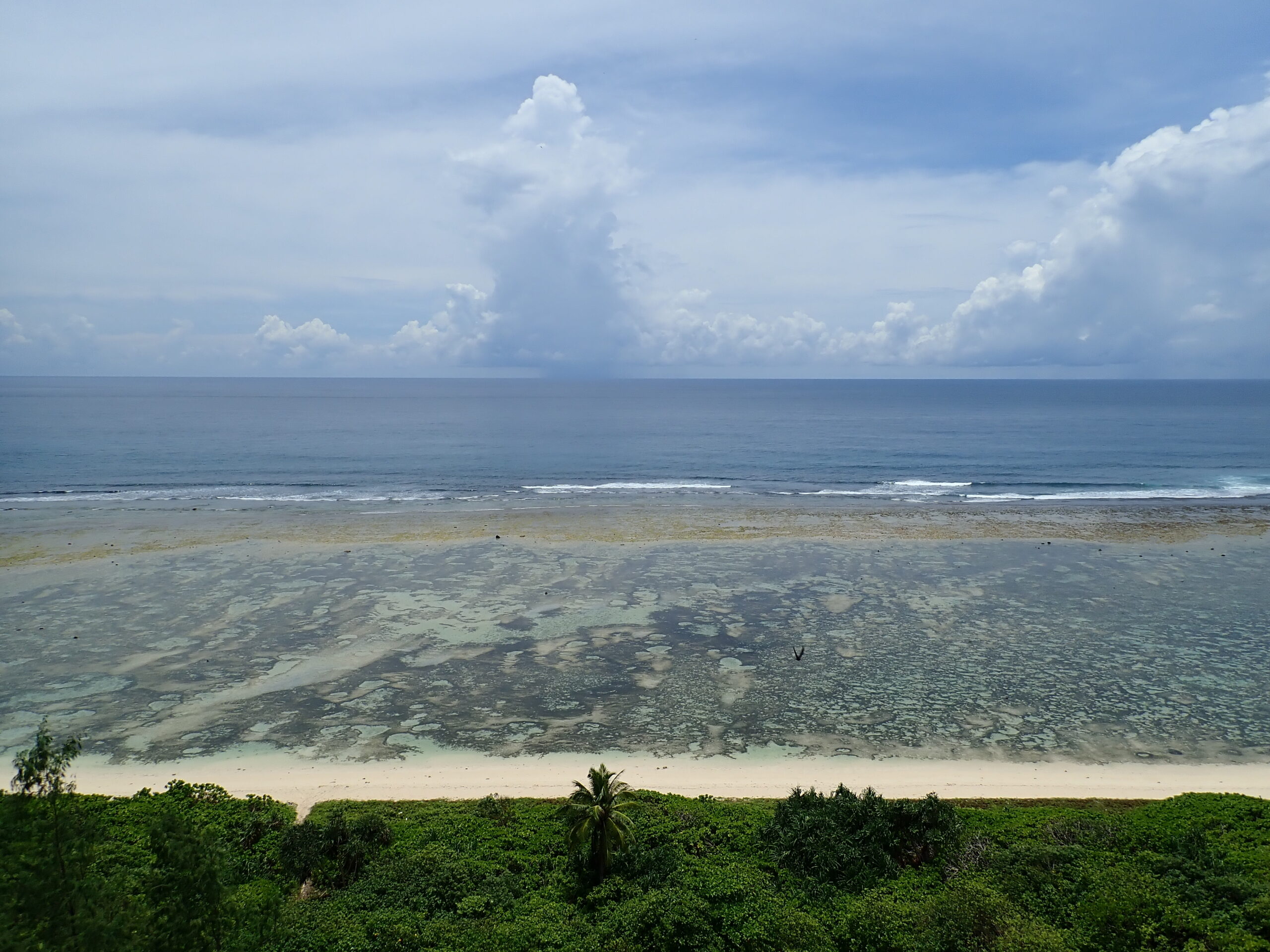What lurks in the shallows?
In the shallow coastal waters of the Andaman Islands, lurks a creature unknown to many, one of the largest of its kind, from a lineage that predates the dinosaurs. You might be imagining a monstrous predator, ambushing unsuspected beachgoers as the ominous music grows louder. But this could not be further from the truth.
The Giant Guitarfish, well… not so giant in this case since they are newborns, barely over a foot in length, are fairly elusive and skittish rays. While adults reach lengths of three meters, they live in deeper waters, only coming to the shallows to give birth to live young known as pups. These pups spend their early years in shallow coastal waters before venturing into the deeper adult habitats.
While these gentle giants pose no threat to humans, their habitats overlap with areas of intense fishing and other anthropogenic activities. These have led to drastic population declines and as a consequence, all seven species of Giant Guitarfish (Family: Glaucostegidae) are listed as Critically Endangered by the IUCN.

A Giant Guitarfish pup hunting for prey (shrimp) in the shallow seagrass meadows at night. Photo © Udayan Rao Pawar
Using Local Knowledge from people across the Islands, our initial work revealed that, unlike most parts of their range, guitarfish were quite abundant in the shallow waters of the Andamans. However, they were concentrated at particular sites across the islands. Currently we are trying to understand what determines the patchy distribution of guitarfish pups across the islands.
To do this, we conducted surveys on foot along shallow coastlines where people had previously observed guitarfish. We made note of habitat characteristics of the coastline and anthropogenic disturbances that we observed at these sites. We also made notes of where, how many and the size of guitarfish we saw. We covered 31 sites across the islands with varying levels of anthropogenic disturbances and habitat types. While we are still analysing these data, some interesting patterns are clear.

A Giant Guitarfish pup observed during a visual survey conducted in the shallow coastal waters of Middle Andaman Island. Photo © Evan Nazareth
Giant Guitarfish pups have a clear preference for large shallow coastal areas sheltered within bays or by a fringing reef. These shallow sheltered waters could be providing the vulnerable pups with a safe refuge from larger predators that lurk in the deeper waters. But while this adaptation would have benefited them in the past, currently many of these shallow coastal areas are also the most accessible to artisanal fishers, beachgoers and are ideal areas to anchor boats. This could lead to direct guitarfish mortalities or them being disturbed enough to abandon the area. This was quite clear from some of the disturbed sites we visited, while the habitat itself seemed “ideal” for the pups, there were none to be seen.

What an ideal habitat for juvenile Giant Guitarfish looks like. With a fringing reef that shelters a shallow lagoon. Photo © Evan Nazareth.
This data will help identify and priorities sites for conservation and design specific conservation strategies for each site based on the type and significance of each threat. In fact, we have already made a step towards this goal, as several sites across the Andaman Islands have been designated as Important Shark and Ray Areas (ISRAs) based on the findings of this study.
